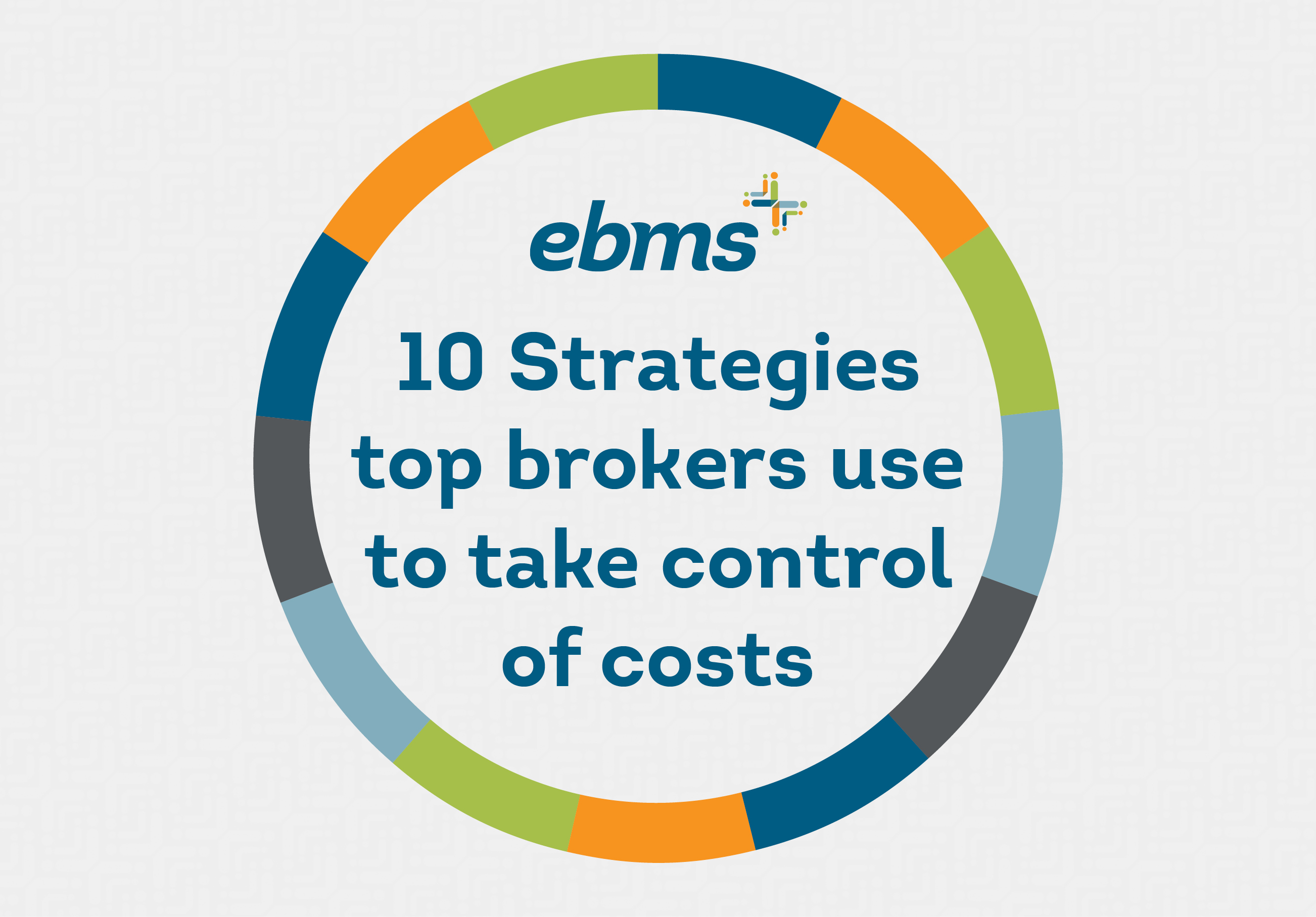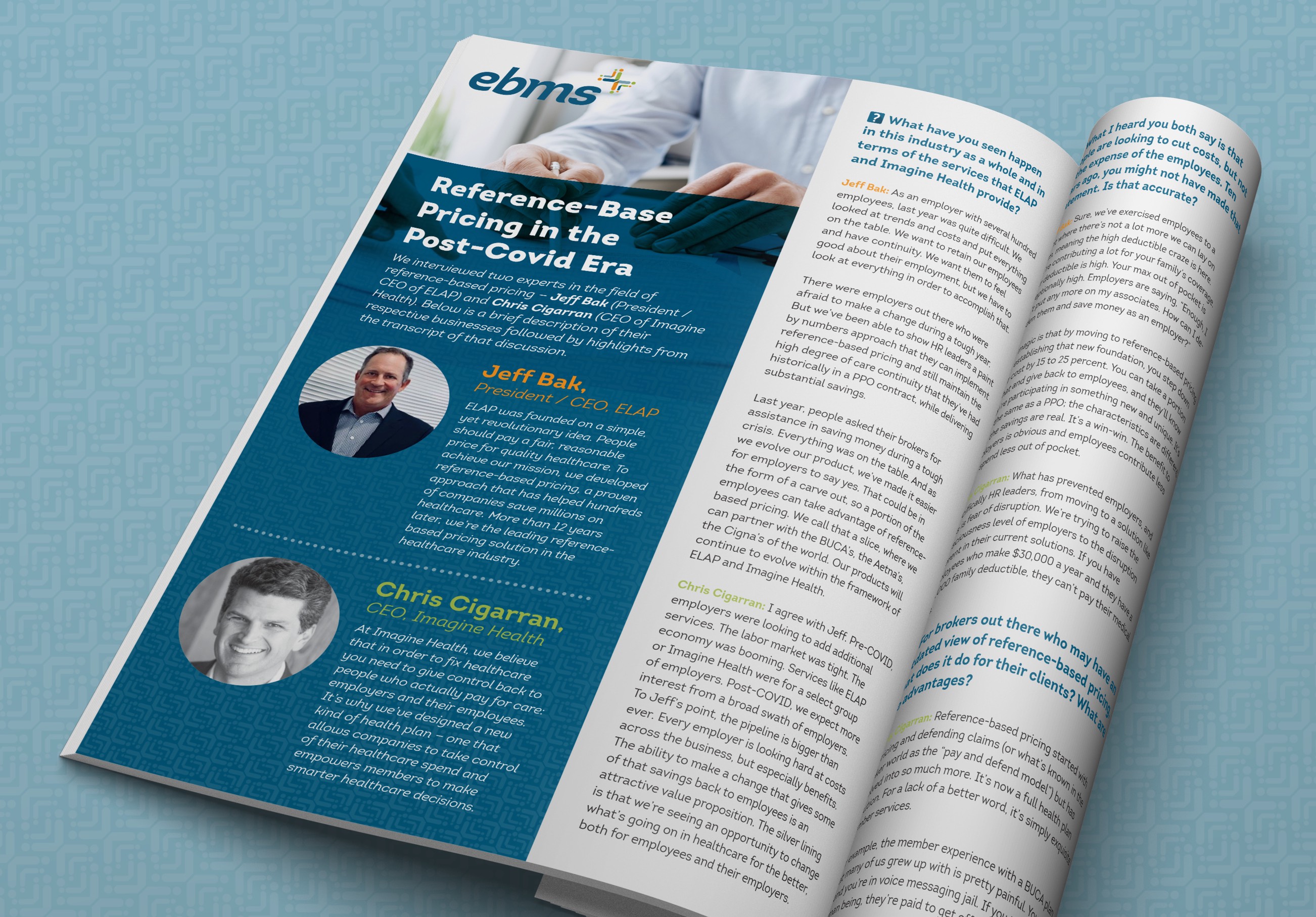Reference-based pricing is a smart response to a slow economy
July 30th, 2020

Back in early 2019, a benefits survey found that only 2 percent of employers were using reference-based pricing (RBP) as a cost-control strategy.
What a difference a year makes!
Today, with so many businesses facing financial pressure as a result of COVID-19, every conversation we have with our customers is about controlling costs. RBP has become a hot topic in 2020.
Our position at EBMS is that RBP is a smart response to our current economic slowdown. In fact, the number of conversations our brokers and clients are having with us about RBP has quantifiably grown over the last few months. What was once considered a fringe tactic is quickly going mainstream.
Are you wondering how RBP might work for you? Before you start cutting services to your employees, consider cutting down on the total cost of your medical spend with RBP. We’ve compiled a list of frequently asked questions, along with answers.
What is reference-based pricing?
RBP is a cost-control strategy by which providers are paid a percentage of an established benchmark, based on local market conditions. Most often that benchmark is Medicare pricing.
How will RBP save my plan money?
Currently, common medical procedures come with a wide price variance. Providers bill anywhere from 150 to 400 percent of the Medicare rate. It only makes sense to rein in those costs by keeping the reference point toward the lower end of this range. You can use RBP for all claims, or just a subset of claims, like inpatient services.
How does RBP affect plan members?
With RBP, plan members benefit from lower out-of-pocket costs, just as you do. They also benefit from open access to providers – there are no restrictive networks to limit their choices, or expose them to out-of-network costs. Members can seek care at the provider of their choice.
How does RBP affect providers?
Because RBP payments are a multiple of the Medicare rate (rather than a discount on the hospital chargemaster cost), RBP is a rational, fair and transparent payment strategy. Providers who accept Medicare rates will generally accept an established fee under RBP as well.
How do I implement an RBP plan?
Just contact EBMS! We handle the details for you, working together with an established RBP vendor.
• The RBP vendor establishes the reference price, supports members and negotiates with providers who push back.
• EBMS administers the fee schedule, handles provider payments, and advocates for members who have balance billing issues.
I’ve heard that balance billing is a real problem under RBP. Is that true?
When plan sponsors and brokers work with a TPA like EBMS that is an experienced RBP partner, balance billing issues become less likely. There are two reasons for that. First, we always focus on fair payment to providers. But most importantly, we have a strong member-advocacy program in place, and we never abandon members to negotiate a balance bill or collections letter on their own.
Is RBP your next step in cost containment? Contact EBMS at 800-777-3575 to start a discussion!




